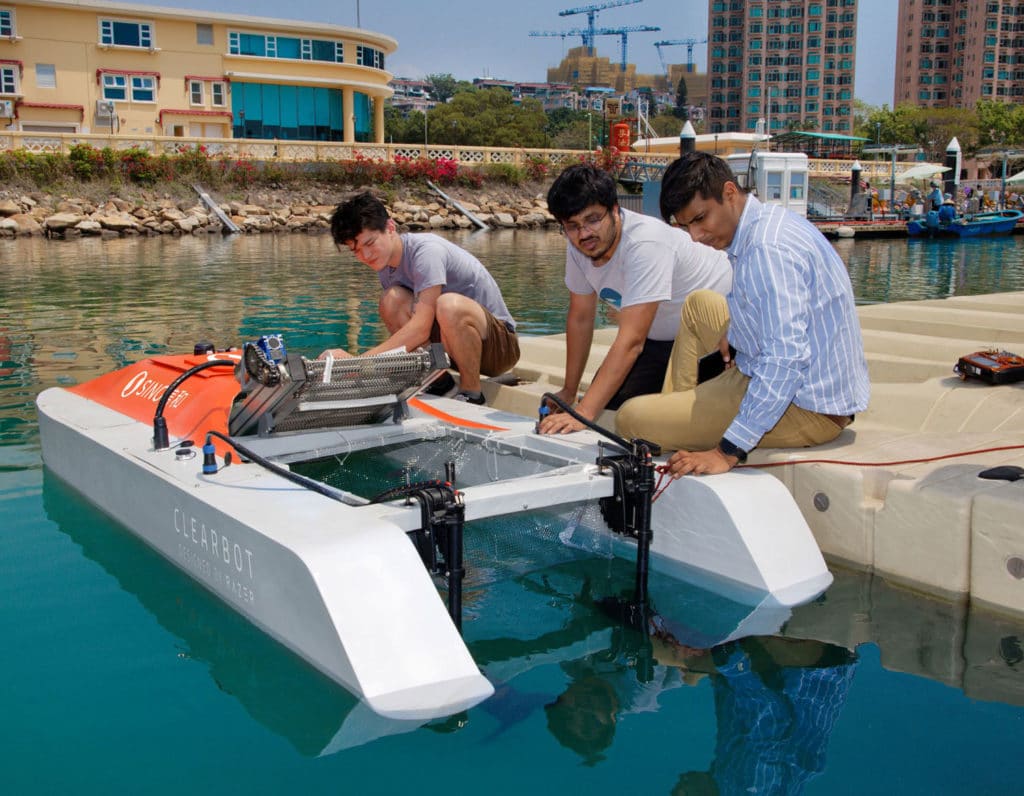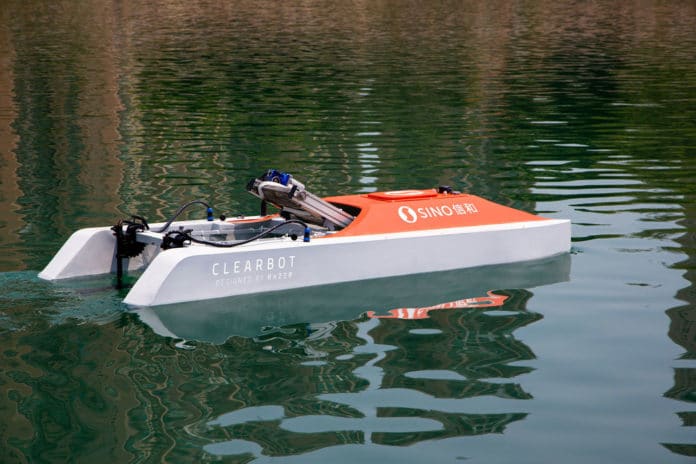One of the main environmental concerns is the millions of tons of plastic waste that end up in our waters every year. A Hong Kong-based startup, Open Ocean Engineering, has developed a possible solution to the problem.
The startup has developed Clearbot Neo – a sleek AI-enabled robotic boat that autonomously collects tons of floating garbage that otherwise would wash into the Pacific from the territory’s busy harbor. At just three meters long and pushed along by a solar battery-powered electric motor, the Clearbot Neo systematically skims the surface and scoops up floating trash, using AI to recognize and log the types of trash it collects and where.
After graduating from Hong Kong University in 2019, computer engineers Sidhant Gupta and Utkarsh Goel founded their startup and began working on their Clearbot solution. The inspiration came during a trip to the Indonesian vacation island of Bali, where they witnessed local workers take out small boats to manually remove waste from the waters. The engineer duo developed a basic aluminum prototype in Bali, followed by a fiberglass version. Last year in June, the startup collaborated with a gaming hardware brand Razer to redesign its intelligent robots, equipping them with the right tools.

The robotic marine garbage collector can be remotely controlled or operated autonomously, where it moves up and down a predetermined area thanks to an electric propulsion system with a four-hour battery and LiDAR obstacle avoidance. Either way, the Clearbot scoops up floating debris and feeds it to an onboard conveyor belt fitted near its bow between its dual hulls and into a holding bin near its stern with a collection capacity of 200 kg (about 440 lb).
According to the company, the Clearbot can bring in as much as a metric ton of refuse per day for recycling or disposal. When fitted with a bespoke boom, it can tackle localized oil and fuel spills by collecting up to 15 liters of pollutants a day.
The robotic boat collects masses of data in the cloud using a two-camera detection system. One camera surveys the water’s surface so the bot can identify rubbish and avoid marine life, navigational hazards, and other vessels – making it safe and versatile for river and harbor work. The second camera photographs each piece of plastic waste that makes its way onto the conveyor. These images are tagged with a GPS location and saved to the company’s database hosted on Microsoft’s Azure platform for subsequent analysis.
The data collected so far in Hong Kong cleanup operations have revealed that only 20% to 40% of the marine plastic recovered can go on to be recycled. Such information, together with variables like sea current and tide information, could help environmentalists and marine authorities identify the trash sources.
With Clearbot Neo and Azure, “We’re finding out how the trash ends up in the water in the first place,” says Clearbot Neo’s co-creator Sidhant Gupta. “It adds a lot of transparency to the process of marine cleanup. We generate data about what’s actually in the water, what’s the make-up of the stuff that’s there, how much of it is recyclable, and what materials we should be focusing on.”
After a long development phase, creators are now planning to scale up and have fleets of Clearbot Neos cleaning up and protecting waters around the globe.
